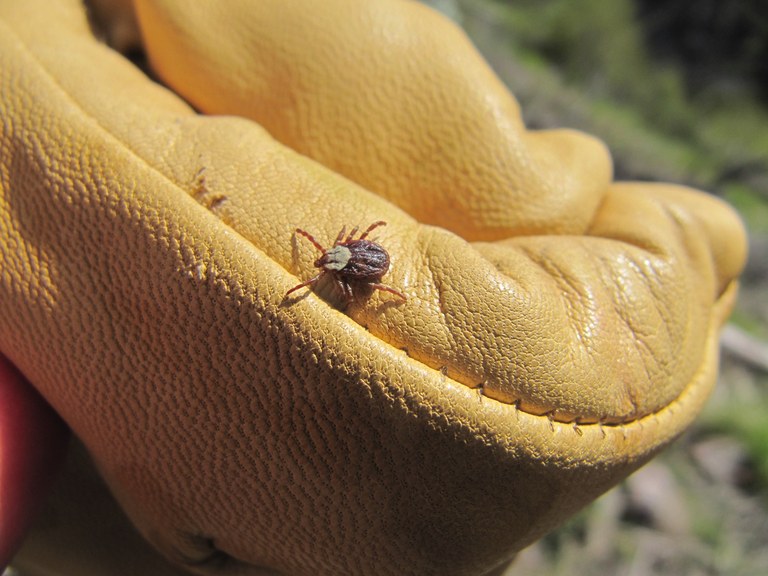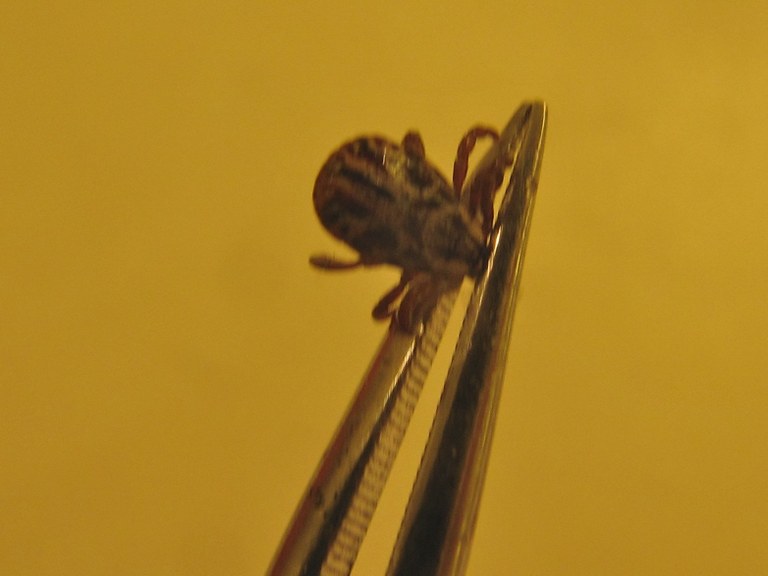How to Hike in Tick Country
Disgusting. Creepy. Disease-ridden. Nuisance. There is no end to the negative feelings we have about ticks. However, with preparation and vigilance, you can defend yourself against these yucky creatures, and enjoy the gorgeous wildflowers and grasses in the area where they live.
 Take preventative measures against ticks and you won't have to be unpleasantly surprised by these little pests at the end of your hike.
Take preventative measures against ticks and you won't have to be unpleasantly surprised by these little pests at the end of your hike.
Tick prevention starts by covering up
Minimizing your exposure to ticks begins with your clothing. Ticks tend to latch on in grassy areas above the cuff of your pant-leg and move upward, looking for dark places to burrow.
Always do a tick check after your hike — these tips will keep a barrier between your skin and the tick, but they may hitch a ride home on your clothes.
- Wear pants and long sleeves — no shorts! The best choice is convertible pants with a flap over the zippered legs — this is an excellent tick trap.
- Tuck your shirt into your pants. Tuck your pants into your socks.
- Wear light colors, so you can identify the ticks more easily as they climb.
- Don a cap with a flap behind the neck, if you have one.
During and after your hike
Stay on Trail
Ticks like to hang out in grassy, brushy, or wooded areas. Sticking to an established trail is good prevention, but certainly is not foolproof. This is one more great reason to keep dogs, who are tick-magnets, on leash.
Tick check frequently
Hikers in tick country will want to do regular tick checks during the day. Brush those bad boys off or crush them with a fingernail, but don't worry that they are going to burrow in immediately. Ticks like to cruise around for a while before they take a bite.
Post-hike tick check.
After your hike you'll want to do a thorough check, and if you're extra-wary, try changing into a complete set of new clothes back at the trailhead. Puts all of her hiking clothes in a garbage bag and seal it, then do a full body check. Favorite tick burrowing sites include the scalp, waist and other dark places where they can hide.
Back home, take a shower
Consider filling up a bathtub or washbasin and tossing in your hiking clothes. Ticks will float up to the surface. Crush them or flush them down the toilet — note that they can survive a wash and rinse cycle.
Check your backpack
Don't forget to give your backpack a full check too. Leave it outside rather bringing it in your home before you check it.
Write a trip report!
Hikers rely on information from each other to understand where and when to expect to encounter ticks. You can let the people who come after you know what to expect by writing a trip report. You can even write one using our app — WTA Trailblazer! Writing trip reports when you find ticks will also help Washington State Department of Health.
Tick First-Aid: Five steps to remove a tick
If a tick has found a place to burrow in on your body, don't panic. While it's possible that the tick has Lyme Disease or Rocky Mountain Spotted Fever, the Pacific Northwest is a "low risk" area for Lyme disease and spotted fever is extremely rare. But don't let that lull you into a sense of security — you do want to get the tick out completely as soon as possible. Here's how:
Use an antiseptic or alcohol wipe to clean the area around the tick.

Grasp the tick with tweezers (or fingers) as close to the skin as possible.
Pull straight and steady. Do not twist or yank. You do not want to leave the tick's head and legs under the skin. (see pic of successful tick removal to the right)
If parts do remain under the skin, pinch the skin up and try to scrape the remains away. Use a sterilized needle if you have to dig anything out.
After you finish, use another antiseptic or alcohol wipe to clean the area.
If you are concerned about disease, put the tick in a plastic bag to save it for testing. Be sure to note the date you found the tick in case you get sick. Watch for symptoms of rash or fever, and if you have concerns, visit your doctor.
You can also send your ticks to the Washington Department of Health for identification, though do note that due to their testing processes, the Department of Health will not be able to provide information to you regarding whether the tick may have transmitted a virus or bacteria to you.
The Spokane Regional Health District has an excellent one-pager that covers most of the content in this blog.
Areas with known tick issues
Some hikes require extra tick-prevention measures. Don't let ticks scare you off from the wildflowers or other great springtime wonders, but do be careful and read recent trip reports to see if ticks have been spotted in the area.
- Columbia River Gorge
- Central Washington
- Eastern Washington
- Snoqualmie Region, east of the Cascade crest

